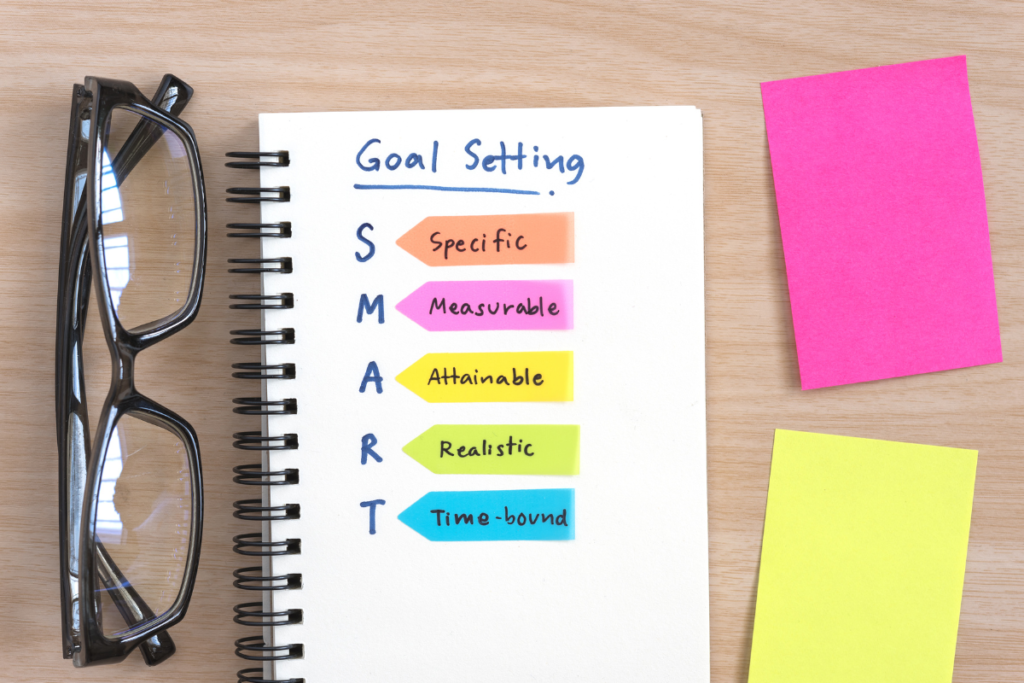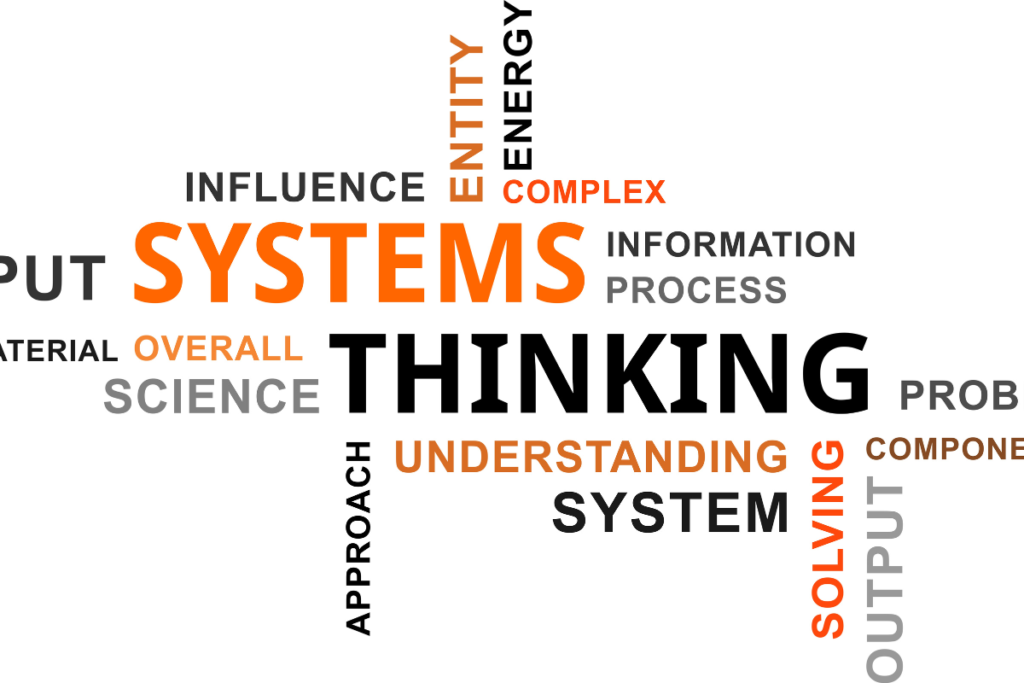Goal setting has long been hailed as the key to success in any endeavor. However, recent discussions have brought to light the idea that traditional goal-setting may be outdated in today’s rapidly changing world. It is important to explore alternative approaches and innovative techniques for redefining success and boosting productivity. Let’s delve into the reasons why goal setting may no longer be as effective as it once was and discover new methods for personal development and goal attainment. So is Goal Setting outdated, let’s explore!
The Effectiveness of SMART Goals
When it comes to goal setting, one technique that has stood the test of time is SMART goals. The acronym SMART stands for Specific, Measurable, Achievable, Relevant, and Time-bound. This approach has been widely used for decades, providing individuals with a structured framework for defining and pursuing their objectives.
SMART goals offer a structured approach to goal setting that aims to enhance clarity, focus, and accountability. However, it’s important to note that while SMART goals can be effective in certain contexts, they may have limitations, particularly in areas related to personal growth and long-term success. The rigidity of the SMART framework may not always allow for the flexibility and adaptability required in today’s rapidly changing world.

“Setting goals is the first step in turning the invisible into the visible.” – Tony Robbins
Introducing the PACT Method
Traditional goal-setting methods may not always provide the desired results in today’s fast-paced world. As an alternative approach, the PACT method offers a fresh perspective on goal setting, focusing on purposeful, actionable, continuous, and trackable steps to achieve desired outcomes. By aligning goals with a long-term purpose and making them actionable, attainable, and easy to track, the PACT method provides a more effective framework for success.
The PACT method emphasizes the importance of taking action and reassessing steps along the way. It encourages individuals to continuously progress and adapt their goals as circumstances change. This iterative approach allows for greater flexibility, ensuring that goals remain relevant and achievable.
One of the key advantages of the PACT method is its focus on the output rather than the outcome. While traditional methods often prioritize a specific end result, the PACT method highlights the importance of the journey and the progress made along the way. By shifting the focus to continuous improvement, individuals can maintain motivation and momentum throughout their goal-setting journey.
Creating purposeful goals is a foundational aspect of the PACT method. By aligning goals with a larger purpose or vision, individuals can find greater meaning and motivation in their pursuits. This sense of purpose drives action and facilitates the continuous progress necessary for achieving desired outcomes.
In addition, the PACT method emphasizes the importance of making goals actionable. Rather than setting vague or abstract goals, individuals are encouraged to define specific actions they can take to move closer to their desired outcomes. This actionable approach ensures that goals are tangible and attainable, increasing the likelihood of success.
Continual tracking is another key component of the PACT method. By regularly assessing progress and measuring results, individuals can stay on track and make necessary adjustments. This enables them to identify areas of improvement and optimize their goal-setting strategies for greater effectiveness.
The PACT method offers a comprehensive and dynamic approach to goal setting. By incorporating purposeful, actionable, continuous, and trackable elements into the goal-setting process, individuals can enhance their productivity and overall success.
Here’s an inspiring quote to further illustrate the PACT method:
The PACT method reminds us to stay purposeful, take action, embrace continuous progress, and maintain trackability. By focusing on these essential elements, we can pave the way for success and achieve our goals with purpose and intention. – John Maxwell
Benefits of the PACT Method
The PACT method offers several benefits that make it an attractive alternative to traditional goal-setting approaches:
- Enhanced focus: The PACT method helps individuals maintain a clear focus on their goals by aligning them with a long-term purpose. This increases motivation and prevents distractions.
- Adaptability: The iterative nature of the PACT method allows for flexibility and adjustments as circumstances change. This ensures that goals remain relevant and attainable.
- Continuous progress: By emphasizing continuous improvement, the PACT method promotes consistent progress and growth. This fosters a sense of accomplishment and motivates individuals to strive for even greater success.
- Increased motivation: The PACT method encourages individuals to take action and see tangible results, boosting motivation and drive. This creates a positive feedback loop that fuels ongoing progress.
- Accountability: The trackability aspect of the PACT method enables individuals to hold themselves accountable for their goals and progress. This provides a sense of ownership and responsibility in achieving desired outcomes.
In the next section, we will compare the effectiveness of SMART goals and the PACT method, providing insights to help you choose the most suitable approach for your personal development journey.
Evaluating SMART Goals vs. PACT Goals
When it comes to goal-setting techniques, two popular approaches stand out: SMART goals and PACT goals. Both methods have their own advantages and can be effective in different situations. Understanding these techniques and evaluating their suitability for your individual needs is crucial for personal development and long-term success.
SMART goals are Specific, Measurable, Achievable, Relevant, and Time-bound. This well-known framework provides clarity and focus, making it an excellent choice in structured environments or when working on short-term objectives. By setting specific targets and defining measurable outcomes, you can track your progress and stay on track to achieve success.
On the other hand, PACT goals take a different approach. PACT stands for Purposeful, Actionable, Continuous, and Trackable. With PACT goals, the emphasis is on continuous growth and output. These goals prioritize taking purposeful action and promoting ongoing progress, allowing for flexibility and adaptability. PACT goals are particularly effective in situations where long-term development and personal growth are key.
“SMART goals offer clarity and focus, while PACT goals prioritize continuous growth and output.”
By exploring different goal-setting techniques, you can tailor your approach to your unique needs and circumstances. Consider the nature of your goals, the resources available to you, and your preferred style of working. Remember, there is no one-size-fits-all solution when it comes to goal-setting. It’s about finding the method that resonates with you and fuels your motivation for success.
In the upcoming section, we will delve deeper into the benefits of a system-centered approach to goal setting and how it can contribute to sustainable changes and continuous improvement in personal development.
| Approach | Advantages |
|---|---|
| SMART Goals |
|
| PACT Goals |
|
As we continue our exploration, we will delve into the system-centered approach to goal setting and its benefits in fostering sustainable changes and continuous improvement. By reimagining our perspective on goal setting, we can embrace new strategies that align with the evolving landscape of personal development and productivity.
Rethinking Goal Setting: Systems vs. Goals
An alternative perspective on goal setting has gained traction in recent years. This approach suggests focusing on systems rather than goals. The idea behind this is that the results we achieve are heavily influenced by the systems we set up for ourselves. Instead of solely fixating on the desired outcome, a system-centered approach emphasizes creating and committing to a sequence of activities that are repeated regularly. By finding joy and satisfaction in the process itself, rather than being solely motivated by reaching a goal, individuals can strive for continuous improvement and long-term success.
When adopting a system-centered approach, you shift your focus from simply achieving a goal to establishing a sustainable framework that supports your progress. By designing systems that align with your values and priorities, you create a structured environment that promotes consistent action. This approach recognizes that success is not solely defined by reaching a specific goal but by embracing an ongoing process of growth and improvement.
“Success is the sum of small efforts repeated day in and day out.” – Robert Collier
The key distinction between a system-centered approach and a goal-centered approach lies in their respective orientations. While goals provide a target to work towards, systems emphasize the habits and practices that drive continuous progress. By committing to a system, you focus on the daily actions that move you closer to your desired outcomes. This shift in perspective allows you to find fulfillment not only in achieving goals but also in the journey itself.
One way to illustrate the difference between systems and goals is through an example:
| Goal-Centered Approach | System-Centered Approach |
|---|---|
| Goal: Lose 10 pounds in 2 months | System: Exercise for 30 minutes daily and eat a balanced diet |
| Outcome-driven: Success is solely based on achieving the goal | Process-driven: Success is found in the consistent implementation of the system |
| Focuses on the end result | Focuses on the daily actions and routines |
As shown in the table above, a goal-centered approach fixates on the desired outcome, while a system-centered approach emphasizes daily routines and habits. By embracing a system-centered approach, you can experience greater flexibility, adaptability, and joy in the pursuit of long-term success.
In summary, rethinking goal setting involves shifting from a goal-centered approach to a system-centered approach. By focusing on the process and finding fulfillment in daily actions, you can experience continuous improvement and long-term success. So, why not give it a try? Start designing systems that align with your values, commit to consistent action, and embrace the journey toward achieving your goals.
The Power of Systems in Personal Development
Shifting the focus from goals to systems can lead to more sustainable changes in personal development. By immersing yourself in the activities of a system and finding intrinsic motivation in the process, you can foster a lifestyle centered around continuous improvement. This approach encourages making incremental progress and embracing the journey, rather than fixating on achievement alone. Systems offer a way to incorporate desired habits and practices into daily life, leading to lasting transformation.
When you prioritize systems over goals, you establish a framework that supports continuous growth and development. Instead of setting rigid milestones, you focus on the habits and actions that drive progress. By consistently engaging in activities that align with your values and aspirations, you create a sustainable path for personal improvement.
Unlike goals that have an endpoint, systems are ongoing. They allow you to make small, sustainable changes over time, building upon each step towards long-term growth. By taking consistent actions and making incremental improvements, you set yourself up for success in personal development.
“Continuous improvement is better than delayed perfection.” – Mark Twain
Mark Twain’s quote highlights the essence of focusing on continuous improvement through systems. Rather than fixating on achieving a perfect outcome, the emphasis is on consistently growing and learning. Through systems, you cultivate a mindset of progress, where each small step contributes to your overall development.
One of the key advantages of systems in personal development is their ability to foster lifelong learning. By engaging in a system that encourages continuous improvement, you remain open to new ideas and opportunities for growth. This mindset allows you to adapt to changing circumstances and refine your approach to personal development as needed.
Moreover, systems provide a sense of structure and accountability. They help you establish routines and rituals that support your goals, making it easier to stay on track and overcome challenges. With a well-designed system in place, you are more likely to stay motivated and committed to your personal development journey.
Embracing continuous improvement through systems offers several benefits:
- Facilitates sustainable changes by prioritizing incremental progress
- Encourages a growth mindset and lifelong learning
- Provides structure and accountability for personal development
- Reduces the pressure of achieving specific goals
- Allows for adaptability and flexibility in the pursuit of personal growth
By embracing the power of systems in personal development, you can cultivate a lifestyle centered around continuous improvement. Through ongoing actions and incremental progress, you can create lasting and sustainable changes that align with your values and aspirations.
Benefits of a System-Centered Approach
Choosing a system-centered approach offers a range of benefits that can transform your personal development journey. By shifting your focus from outcome-driven goals to the process itself, you can experience a deeper sense of fulfillment and purpose.
One of the primary advantages of a system-centered approach is the ability to find joy in the activities you engage in. Instead of fixating on the end result, you can take pleasure in each step of the process, celebrating your progress along the way.
“The system-centered approach allows you to find happiness in the journey itself. It’s about embracing the present moment and finding satisfaction in the tasks at hand.” – Jane Adams, Personal Development Expert
Another key benefit of adopting a system-centered approach is the avoidance of comparison. When your focus is on personal growth, rather than external validation, you can liberate yourself from the negative effects of constantly comparing your progress to others. This promotes a healthier mindset and allows you to set your own pace.
Furthermore, systems provide a more sustainable path to success. Unlike traditional goal-setting methods, systems can be maintained over the long term, ensuring continuous progress and improvement. By incorporating positive habits into your daily routine, you can create lasting change that extends far beyond the achievement of a single goal.
Embracing a system-centered approach empowers you to shape your personal development journey according to your unique values and aspirations. By finding joy in the process, avoiding the pitfalls of comparison, and following a sustainable path to success, you can unlock your full potential and achieve remarkable growth.
Let’s explore a real-world example of the benefits of a system-centered approach:
| Traditional Goal-Centered Approach | System-Centered Approach |
|---|---|
| You set a goal to lose 10 pounds in two months. | You establish a system of regular exercise and mindful eating. |
| You focus on the number on the scale. | You find joy in taking care of your body and nourishing it with healthy choices. |
| You compare your progress with others who are also trying to lose weight. | You celebrate your own incremental progress and enjoy your unique journey. |
| Once you reach your goal, you may revert to old habits. | Your system becomes a sustainable lifestyle, leading to long-term health and well-being. |
As you can see from the example, embracing a system-centered approach not only promotes holistic growth but also ensures that the positive changes you make become an integral part of your life.

Embrace the power of a system-centered approach:
- Find joy in the process of personal development
- Avoid comparing yourself to others
- Create sustainable systems that lead to continuous improvement
Tips for Designing Effective Systems
When it comes to designing effective systems that support sustainable changes and continuous improvement, careful consideration and planning are key. Here are a few essential tips to help you create systems that optimize your personal development journey:
1. Define Clear Objectives:
Start by identifying your goals and objectives. Clearly define what you want to achieve with your system.
2. Break it Down:
Break your goals down into smaller, manageable tasks. This will make the process more attainable and allow you to track your progress along the way.
3. Embrace Flexibility:
Design your system in a way that allows for flexibility and adaptation. Life is full of unexpected changes, and your system should be able to accommodate them without causing frustration.
4. Focus on Incremental Progress:
A system-centered approach emphasizes continuous improvement. Instead of striving for perfection or instant results, focus on making small, incremental progress each day.
5. Track and Measure:
Use tools or apps to track your progress and measure the effectiveness of your system. This will help you identify areas for improvement and make adjustments as needed.
6. Seek Feedback:
Don’t be afraid to seek feedback from others who have experience with similar systems or goals. Their insights can provide valuable perspectives and help you fine-tune your approach.
7. Stay Accountable:
Hold yourself accountable to the system you’ve designed. Set regular check-ins and reviews to evaluate your progress and make any necessary course corrections.
“The only way to achieve sustainable changes and continuous improvement is to design systems that support your goals and align with your values.”
By following these tips, you can create systems that empower you to make sustainable changes and embrace continuous improvement. Remember, the key is to find a system that works for you and supports your personal development journey.
Embracing a New Approach to Success
As our understanding of success and productivity evolves, it is crucial to embrace new approaches. By reimagining goal setting and adopting innovative techniques, you can adapt to the changing landscape of personal development. This involves embracing systems, focusing on continuous improvement, and finding intrinsic motivation in the process.
Personal development trends are constantly evolving, and it’s important to stay open-minded and explore new strategies for aligning your goals with long-term success. Evolving productivity practices and reimagining goal setting can lead to transformative personal growth and enhanced productivity.
By stepping away from traditional approaches and exploring new methodologies, you have the opportunity to tap into your full potential and achieve remarkable results. Remember, personal development is a journey, and staying flexible and adaptable allows you to make the most of every opportunity for growth.
Finding Inspiration in Evolving Personal Development Trends
Personal development trends provide valuable insights into the changing dynamics of success and productivity. By keeping an eye on emerging trends and practices, you can gain inspiration and discover innovative ways to supercharge your personal growth. Stay informed about the latest research, attend workshops and conferences, and engage with thought leaders in the field to stay ahead of the curve.
- Explore diverse personal development methodologies.
- Stay curious and open to new ideas.
- Connect with like-minded individuals and engage in meaningful discussions.
- Continuously seek knowledge and embrace lifelong learning.
Evolving productivity practices and personal development trends offer exciting possibilities for growth and success. By actively engaging with these trends and reimagining your approach to goal setting, you can unlock your full potential and achieve remarkable outcomes in both your personal and professional life.
So, Is Goal Setting Outdated?
In conclusion, traditional goal-setting techniques like SMART goals may no longer be as effective in today’s rapidly changing world. It is crucial to explore alternative approaches that better align personal development and goal attainment. One such approach is the PACT method, which emphasizes purposeful, actionable, continuous, and trackable goals. Additionally, adopting a system-centered approach focuses on creating and committing to a sequence of activities that lead to continuous improvement.
By reimagining goal setting and embracing these innovative approaches, individuals can adapt to the evolving landscape of success and productivity. Rather than solely fixating on reaching a specific outcome, the emphasis shifts towards finding joy in the process and making sustainable changes. This includes exploring new strategies, staying open-minded, and leveraging technology to optimize the journey toward personal growth and long-term success.
So, as you embark on your personal development journey, remember that goal setting is not a one-size-fits-all approach. It is essential to find the method that works best for you and aligns with your values, purpose, and aspirations. By adopting alternative approaches, embracing continuous improvement, and finding fulfillment in the process, you can thrive in today’s dynamic world and achieve your goals on your own terms.
Source Links
- https://financialpause.com/the-essential-guide-to-setting-smart-goals-for-success/
- https://1huddle.co/blog/outdated-smart-goals/











